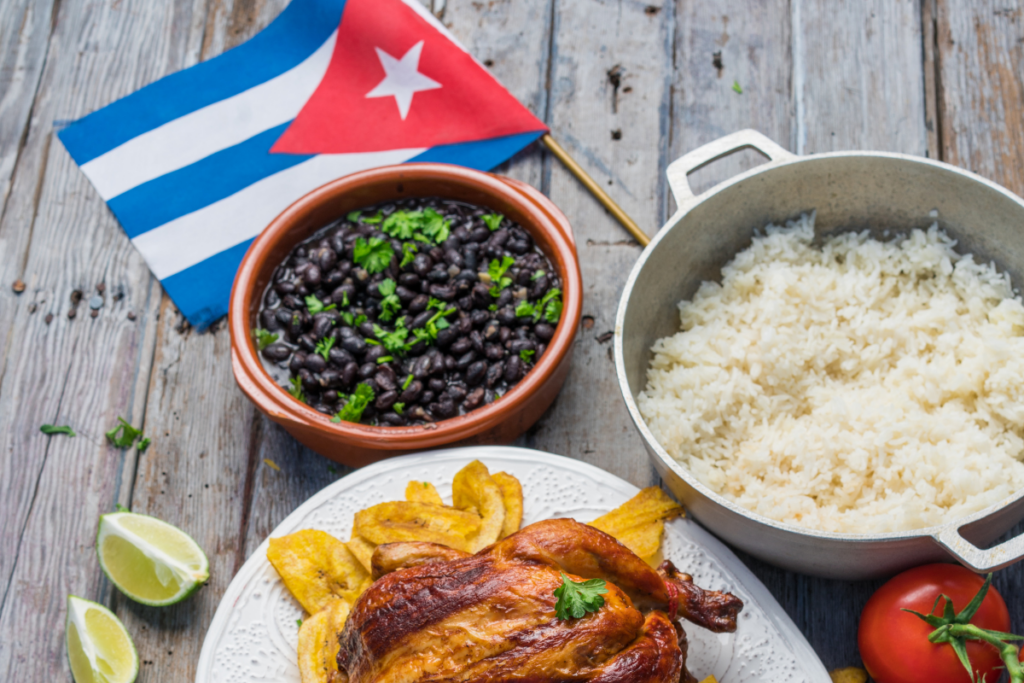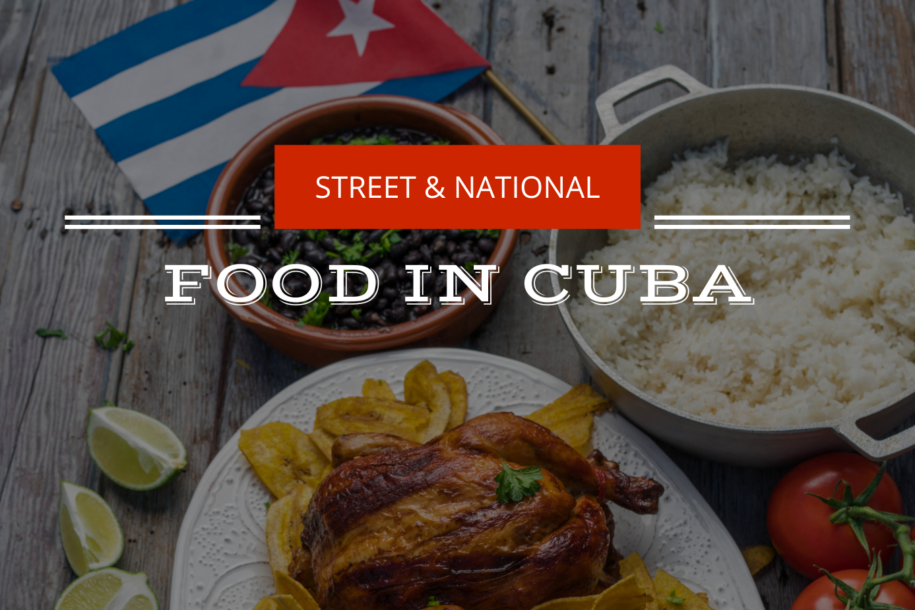Many travellers are pleasantly surprised by the quality and variety of food that can be found in Cuba. This Caribbean island offers a culinary adventure deeply rooted in its culture, history, and natural bounty.
While beans and rice are the staples, the island’s cuisine bursts with flavors and ingredients that reflect its rich heritage and fertile land.
Table of Contents
Staples of Cuban Cuisine

In Cuban households and restaurants, beans and rice are fundamental components of most meals. This combination often comes in the form of “Moros y Cristianos” (black beans and rice) or “Congri” (red beans and rice). To complement these, Cuban salads typically feature simple, fresh ingredients like cucumber, tomato, and cabbage.
When it comes to proteins, chicken and pork are the most common meats on Cuban tables. However, given Cuba’s extensive coastline, a surprising variety of delicious seafood is also frequently on offer, including fish, shrimp, and lobster.
Seasonal Freshness
Cuba’s tropical climate ensures a year-round supply of fresh fruits and vegetables. Depending on the season, you can savor mouth-watering mangoes, pineapples, papayas, guavas, and coconuts. Other seasonal delights include oranges, grapefruits, breadfruits, sweet potatoes, bananas, and enormous avocados. This abundance of fresh produce enhances the flavors of everyday meals and adds a vibrant color to Cuban dishes.
Cuban Breakfast
If you stay at a Casa Particular (a Cuban B&B), you’ll experience a hearty breakfast that varies from house to house. Typically, this includes strong Cuban coffee, milk, fruit juice, bread, eggs (or an omelette), and a selection of fresh fruit. Cuban coffee is known for its robust flavor, though some visitors might find it too strong.
Vegetarian and Gluten-Free in Cuba
Vegetarianism is gradually gaining awareness in Cuba, though the concept is still not fully understood by many locals. Traditionally, Cubans believe that a good meal includes meat. However, the influence of tourism has led to more vegetarian options on restaurant menus and in guesthouses. Common vegetarian meals include rice, beans, omelets, and salads. Though the variety might be limited, it’s relatively easy to find vegetarian fare across the island.
For strict vegetarians or vegans, it’s wise to bring your own plant-based snacks, such as nut butters, nuts, granola bars, and protein shakes, as these can be expensive and hard to find locally. Additionally, some Cuban dishes that appear vegetarian, like “cremas” (pureed vegetable soups), might need slight modifications to exclude toppings like cheese or ham.
Maintaining a gluten-free diet in Cuba is quite manageable due to the natural, unprocessed nature of much of the food. Guesthouses offer the advantage of ordering specific meals and instructing the cook about dietary restrictions.
Cuban Drinks
Cuban drinks are as iconic as its cuisine. Rum serves as the base for the world-famous Cuban cocktails, including the Daiquiri, Mojito, Ron Collins, Piña Colada, and Cubata. Excellent draught beer is available everywhere, along with local and imported soft drinks.
Sweet Treats and Desserts
Cuban sweets and desserts, often homemade with natural ingredients, are a delightful conclusion to any meal. Popular choices include Cuban flan, arroz con leche (rice pudding), merenguitos (meringue cookies), cremitas de leche (milk fudge), and buñuelos (fried dough balls).
Street Food Delights
Cuba might not be internationally known for its street food, but locals know that the streets of Havana and other cities are full of cheap, convenient, and tasty comfort food. One of the legendary street foods is the “peso” pizza – an incredibly affordable snack that many budget travellers have enjoyed. These small, cheesy pizzas are perfect for a quick bite on the go.
Another street food favorite is freshly fried churros, often filled with sweet syrups like guava or dulce de leche. You might also find other fried or sugary delights, from croquetas (croquettes) to empanadas (stuffed pastries). The ever-changing availability of street food in Cuba, where vendors might appear one day and be gone the next, keeps the culinary scene exciting and unpredictable.
Learn Cuban Cooking
For those wanting to dive deeper into Cuban cuisine, taking a cooking class in Havana is a fantastic option. These classes often include visits to local markets, where you can learn about the ingredients and culinary culture of Cuba. You’ll discover family customs, traditional recipes, and even how Cubans negotiate prices in different currencies. It’s a hands-on way to understand the essence of Cuban cooking and bring a piece of it back home.
Frequently Asked Questions
What is the most popular street food in Cuba?
One of the most popular street foods in Cuba is the “peso pizza.” These incredibly affordable pizzas are a staple among locals and tourists alike. Sold for just a few Cuban pesos, they are topped with a thin layer of cheese and tomato sauce and cooked in makeshift ovens by street vendors. Peso pizzas are not only a quick and satisfying snack but also a reflection of the resourcefulness and creativity of Cuban street food culture.
Are there any vegetarian street food options available in Cuba?
Yes, there are several vegetarian street food options available in Cuba. Some popular choices include tostones (twice-fried plantain slices), frituras de malanga (malanga fritters), and churros (fried dough pastries sprinkled with sugar). While vegetarianism is still a relatively new concept to many Cubans, the influence of tourism has led to an increase in vegetarian options in both street food and restaurant menus. However, it’s important to communicate clearly with vendors to ensure that dishes are prepared without meat or meat-based ingredients.
What is the national dish of Cuba, and can it be found as street food?
The national dish of Cuba is “Ropa Vieja,” a flavorful stew made from shredded beef, tomatoes, bell peppers, onions, and spices. While traditionally served as a main course in restaurants and homes, you can also find Ropa Vieja in a street food format, often served in tacos or sandwiches. These portable versions allow visitors to enjoy the rich, savory flavors of Cuba’s national dish while exploring the streets of cities like Havana.
Conclusion
Cuban cuisine is a rich tapestry of flavors, reflecting the island’s history, culture, and natural abundance. From hearty staples like beans and rice to the fresh, seasonal fruits and vegetables, there’s always something delicious to discover.
Whether you’re indulging in street food, dining at a Casa Particular, or exploring vegetarian and gluten-free options, the culinary adventure in Cuba is both surprising and delightful. So, on your next trip, take the time to savor the diverse and vibrant food scene that Cuba has to offer.
